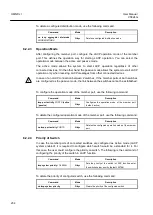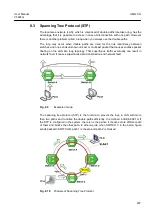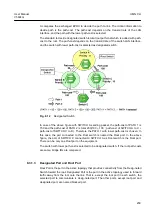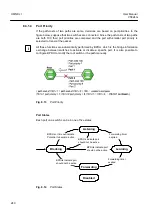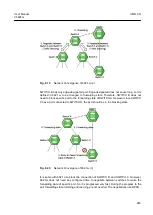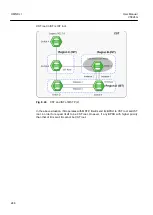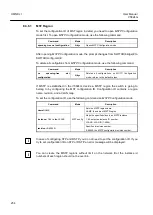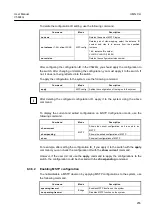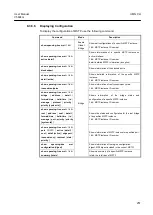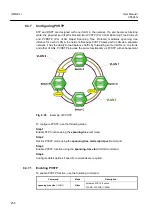
UMN:CLI
User Manual
V5824G
246
8.3.2.4
Compatibility with 802.1d
RSTP internally includes STP, so it has compatibility with 802.1d. Therefore, RSTP can
recognize the BPDU of STP. However, STP cannot recognize the BPDU of RSTP. For
example, assume that SWITCH A and SWITCH B are operated as RSTP and that
SWITCH A is connected to SWITCH C as the designated switch. If SWITCH C is with
802.1d ignoring the BPDU of RSTP, it is interpreted as not connected to any switch or
segment.
Fig. 8.21
Compatibility with 802.1d (1)
However, SWITCH A converts the port receiving BPDU into RSTP of 802.1d because it
can read the BPDU of SWITCH C. Then SWITCH C can read BPDU of SWITCH A and
accepts SWITCH A as the designated switch.
Fig. 8.22
Compatibility with 802.1d (2)
8.3.3
MSTP Operation
To operate the network more effectively, the V5824G uses MSTP (Multiple Spanning-Tree
Protocol). It constitutes the network with VLAN subdividing logically the existing LAN
domain and configures the route by VLAN or VLAN group instead of existing routing
protocol.
Operation
This section explains how STP/MSTP operate differently on the LAN. Suppose to
configure 100 VLANs in the switch A, B, and C.
In case of STP, there’s only an STP on all
of VLANs and it does not provide multiple Instances.



